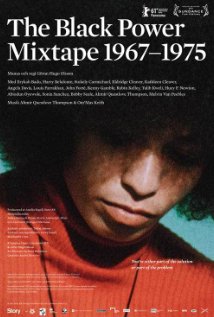
Movie Review
Black Power Mixtape, 1967-1975
Directed by Göran Olsson
2011, 100 mins., Not rated
The film Black Power Mixtape, 1967-1975 is a unique documentary currently in limited release after securing a variety of awards on the festival circuit. The film is a look back at the “Black Power” movement in the years referenced in the title. What makes it unique is that the footage comes almost exclusively from material gleaned from Swedish news crews who were covering these events in America at the time.
The footage also contains coverage of visits by prominent African American activists to various European capitals. Much of this footage has probably never been seen by American audiences. The film also contains several backstage type moments of these figures on their tours and between interviews, including a joyful interlude with the irrepressible Harry Belafonte. These candid clips are an interesting diversion from the typical press conference scenes or static footage of speakers behind a podium.
The film walks us through the growth of the movement without the use of a central narrator, but instead relies on the subtitled commentary of the Swedish reporters that was recorded at the time and also includes contemporary comments from prominent African-American thinkers and activists as well as a few instances of present day comments being provided by the historical figures depicted in the film, including Marxist feminist intellectual Angela Davis, whose trial is covered in some detail.
Just as interesting as the footage of these historical figures speaking with revolutionary fervor, and to my mind just as valuable to the viewer as these seldom seen interviews and vignettes are the scenes of every day life filmed in the period that are scattered throughout the picture. Early on in the film we hear form a recently returned Vietnam veteran who comments that in Vietnam he was fighting for his country, and now that he is home he is “fighting for his life.”
In another scene an urban apartment full of hungry children wake to find a breakfast consisting only of dry cereal without milk. In still another scene, a reporter approaches a stunned crowd on the street that is reacting to the death of Senator Robert F. Kennedy, coming only two months after that of Martin Luther King, Jr. and when a spectator is asked about the future in the light of these events he replies, “There ain’t no future.”
One of the unfortunate, albeit minor, drawbacks of the film is that it’s U.S. coverage centers almost exclusively on New York and California locations. So, therefore, although their images are briefly glimpsed, we are left without the stories of Chicago Black Panther’s Mark Clark and the dynamic Fred Hampton, both of whom were murdered in a pre-dawn police raid in 1969.
As the film progresses from the late sixties into the early seventies it becomes an interesting look at how a movement rises and falls as it’s leaders are targeted by both local police and Federal authorities as well as by the corporate media. It also examines how various social and economic pressures of the time helped to erode and factionalize the movement and we see it deteriorate before our eyes. One is left with the distinct impression that this is a movement left unfinished.
Black Power Mixtape is a valuable time capsule for the youth of today who have never heard the words or seen the images of the some of the activists pictured in the film. However, in the light of the recent ‘occupy’ evictions, the scenes of police violence and tear gas wafting through city streets may appear all too familiar.
After all of the colorful speeches, anecdotes, and dramatic footage, one of the most haunting scenes is with an unknown figure. It is an interview with a reformed teenage prostitute and drug addict who through a veil of tears articulates her determination to escape the fate of the many prisons that ensnare the youth of the ghetto. We leave the theater wondering if she made it, and knowing full well that for black, white and brown, the struggle continues every day.











Comments